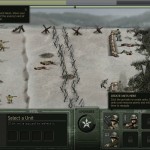
The British responded by singing carols of their own. The Germans placed candles on their trenches and on Christmas trees, then continued the celebration by singing Christmas carols. The first truce started on Christmas Eve 1914, when German troops decorated the area around their trenches in the region of Ypres, Belgium and particularly in Saint-Yvon (called Saint-Yves, in Plugstreet/Ploegsteert – Comines-Warneton). Roughly 100,000 British and German troops were involved in the unofficial cessations of hostility along the Western Front. However, this has been criticised by some other academics, with Gavin McLean noting that 'Māori had certainly adapted pā to suit the musket, but others dismissed Belich’s claim as baseless post-colonial revisionism.' There has been an academic debate surrounding this since the 1980s, when in his book The New Zealand Wars, historian James Belich claimed that Northern Māori had effectively invented Trench warfare during the first stages of the New Zealand Wars. British casualty rates of up to 45 percent, such as at Gate Pa in 1844 and the Battle of Ohaeawai in 1845, suggested that contemporary firepower was insufficient to dislodge defenders from a trench system.


These systems included firing trenches, communication trenches, tunnels, and anti-artillery bunkers. In the New Zealand Wars (1845–1872), the indigenous Maori developed elaborate trench and bunker systems as part of fortified areas known as pā, employing them successfully as early as the 1840s to withstand British cannon, muskets, and an experimental poison-gas mortar. During the Peninsular War, the British and Portuguese constructed the Lines of Torres Vedras in 18 these proved effective in stopping the French advance on Lisbon in 1810.In the 1711 campaign season the Duke of Marlborough breached them through 'a magnificent piece of manoeuvring'. They ran from Arras to Cambrai and Valenciennes where they linked up with existing defensive lines fronted by the river Sambre.
#Armor games warfare 1917 cheats plus



 0 kommentar(er)
0 kommentar(er)
